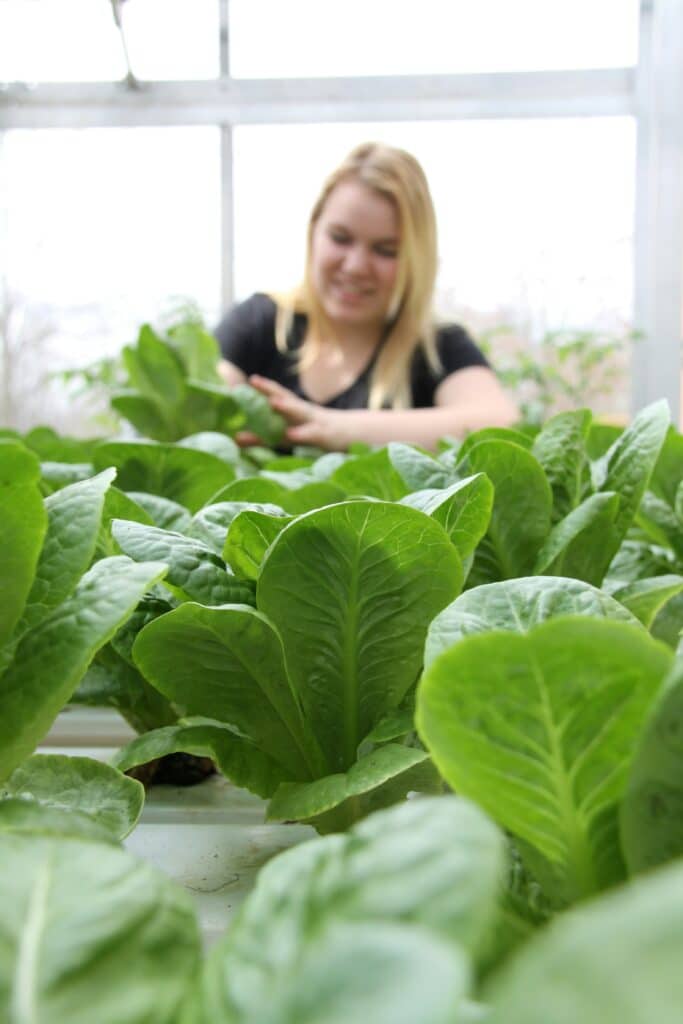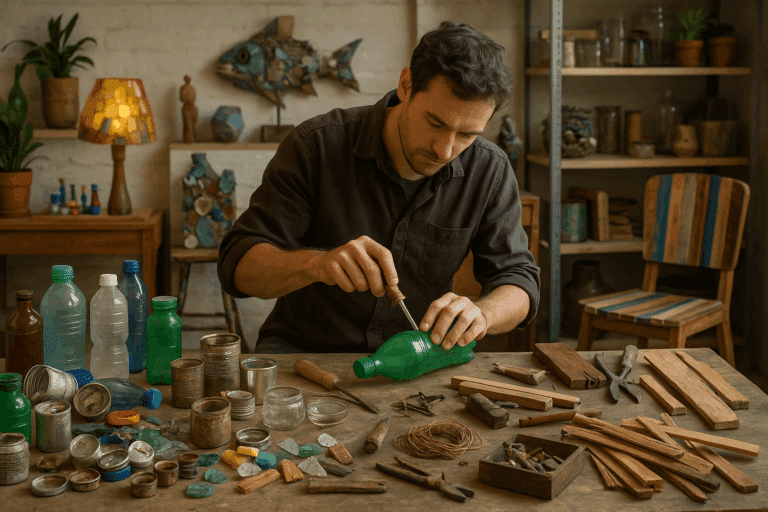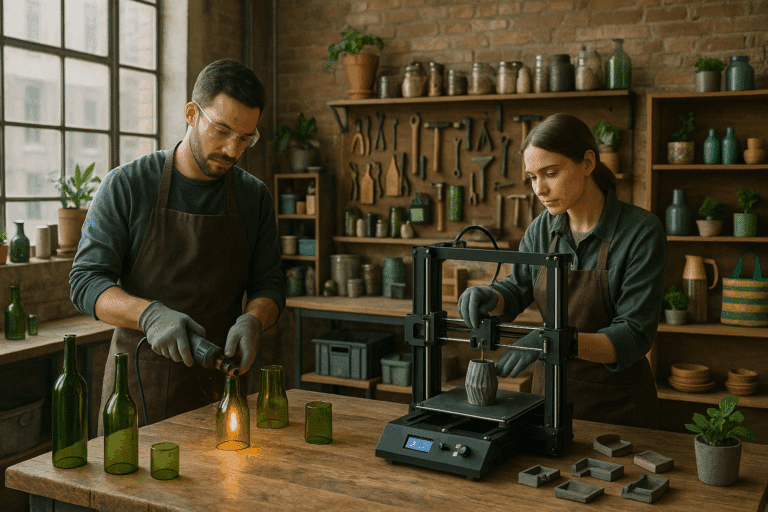What if there was a way to give your wine corks a second life, while also sprouting new life? Introducing wine cork seed starters, an eco-friendly, chic, and efficient method for plant propagation. This innovative gardening technique is not just practical but also adds an aesthetic touch to your indoor or outdoor gardens.

In this discussion, we will unveil the process of using wine cork seed starters for plant propagation. You’ll learn how to repurpose used wine corks as a medium for growing your seeds, creating a sustainable alternative to single-use plastic pots. You’ll be guided through the steps, from choosing the right cork, preparing your seeds, to monitoring their growth.
Beyond the step-by-step guide, we’ll also delve into the benefits of this method. Expect to discover how wine cork seed starters can lead to healthier plants, reduce environmental waste, and save you money. So, get ready to cultivate your garden in a more sustainable and stylish manner, demonstrating that even the smallest acts can contribute to a greener planet. 🌱🍷🌍
The Art and Science Behind Wine Cork Seed Starters
Starting seeds in wine corks is not only a sustainable choice for gardening, but it also brings an element of style and charm to plant propagation. In the heart of this innovative solution lies the understanding of some basic principles of biology and material science.
Material Advantages of Wine Corks
Wine corks are made from the bark of the Cork Oak tree (Quercus suber). This particular type of wood has unique properties that make it ideal for use in horticulture. It is light, durable, and porous, allowing air and water to pass through while retaining moisture—a perfect environment for germinating seeds.
The cellular structure of cork consists of tiny, honeycomb-like compartments filled with air, making it naturally insulating and resistant to rot. Unlike plastic or ceramic seed starters, cork provides a breathable medium that prevents mold growth and root suffocation. Additionally, its elasticity allows for easy handling and transplanting, as seedlings can be gently pushed out without damaging delicate roots.
The Science of Seed Germination in Cork
For seeds to sprout successfully, they need oxygen, moisture, and warmth—all of which cork naturally facilitates. The porous structure ensures proper aeration, preventing waterlogging while maintaining consistent humidity. When a seed is nestled into a small hole drilled into the cork and covered with a thin layer of soil, the cork acts as a miniature greenhouse, trapping warmth and moisture to encourage faster germination.
Moreover, cork’s pH-neutral composition makes it suitable for a wide variety of plants. Unlike some synthetic materials that may leach harmful chemicals, cork is organic and biodegradable, ensuring a safe environment for young seedlings.
Biological Insights: Why Seeds Thrive in Wine Corks
The porous nature of wine corks creates a humid environment which is crucial for the germination of most seeds. This replicates the conditions found in fertile soil, making the seeds believe they are in an optimal location to sprout.
Sustainability and Aesthetic Appeal
Repurposing wine corks as seed starters is an excellent way to reduce waste. Billions of corks are discarded annually, and instead of ending up in landfills, they can be transformed into eco-friendly plant nurseries. Their compact size makes them perfect for urban gardeners with limited space, allowing for easy placement on windowsills or tabletops.
Beyond functionality, wine corks add a rustic, artistic touch to gardening. They can be arranged in creative ways—such as in repurposed wooden crates, glass jars, or even hung vertically on a board—making them as decorative as they are practical.
How to Make Your Own Cork Seed Starters
Transplant When Ready: Once seedlings develop strong roots, plant the entire cork directly into soil—it will decompose naturally.
Collect and Prepare Corks: Soak used corks in water for a few hours to soften them, then drill or carve a small hole in one end.
Fill with Soil: Add a lightweight seed-starting mix into the cavity, leaving a little space at the top.
Plant the Seeds: Place one or two seeds in each cork and lightly cover them with soil.
Water Gently: Use a spray bottle to keep the soil moist without over-saturating the cork.
Getting Started: Preparing Your Wine Cork Seed Starters
Once you’ve selected your wine corks and prepared a safe working area, it’s time to pay attention to a few finer details that will ensure the success of your seed starters. While the process is straightforward, taking a few extra steps can greatly improve the effectiveness and longevity of your cork planters.
Moistening the Corks
Before hollowing out the corks, consider soaking them in warm water for 15–30 minutes. This softens the cork material, making it easier to carve and reducing the likelihood of cracking or splitting. Once softened, pat the corks dry with a cloth before continuing the hollowing process.
Optimizing Cavity Size
When hollowing out the center of each cork, aim for a depth of about 1/2 to 2/3 of the cork’s length. This provides enough space for the seed to germinate and develop a small root system. Be cautious not to drill all the way through—retaining the base ensures the cork can hold soil and moisture properly.
Soil Selection and Moisture
Use a lightweight, well-draining seed-starting mix rather than regular garden soil. These mixes retain moisture better and encourage quicker germination. Lightly moisten the soil before inserting it into the cork to make sure it holds its shape and supports the seed well.
Safety Precautions during Preparation
While preparing your wine cork seed starters, it’s crucial to handle tools with care to prevent accidents. Always use a cutting board or a resistant surface underneath the cork when hollowing it out.
Caring for Your Wine Cork Seed Starters
Caring for your wine cork seed starters involves regular watering and exposure to sunlight. The process is similar to traditional seed starting methods, yet there are a few unique aspects to consider.
Watering
The small size and porous nature of wine corks require more frequent watering than traditional pots. However, overwatering can lead to seed rot. Therefore, it’s important to find a balance. A good rule of thumb is to water when the cork starts to feel dry to the touch.
Sunlight and Temperature
Seedlings need plenty of sunlight. However, they are also sensitive to extreme temperatures. Place your wine cork seed starters in a location with ample sunlight but away from direct, harsh rays. A window sill often works perfectly.
Transplanting Your Wine Cork Seedlings
wine cork seed starters provide a stylish, sustainable, and biologically beneficial way to propagate plants. They are a testament to the power of innovative upcycling—transforming something as ordinary as a used wine cork into a functional tool for sustainable gardening. This approach not only reduces waste but also enhances the overall gardening experience by integrating eco-friendly practices with creativity.
What makes wine corks particularly effective is their natural material—cork is porous, lightweight, and biodegradable. As the cork breaks down in the soil, it adds texture and improves drainage, which is especially helpful in compact or clay-heavy soils. The cork also acts as a slow-release barrier, protecting the delicate roots of your seedlings as they adjust to their new environment.
Tips for Successful Transplanting
To increase the survival rate of your seedlings, it’s important to follow best practices when moving them from their cork containers into larger pots or the garden.
Watch for pests and stress signs in the days following the transplant. Seedlings are particularly vulnerable to aphids, slugs, and stress from too much or too little water.
Transplant during the cooler parts of the day, such as early morning or late afternoon. This minimizes transplant shock caused by direct sunlight or heat.
Water the soil before transplanting and ensure it remains moist (but not soggy) in the days following. This supports root establishment.
Label your seedlings before transplanting, especially if you’re working with multiple varieties of herbs, vegetables, or flowers. Wine corks can be labeled with a marker prior to planting to serve as handy garden markers.
Creative Variations
You can further personalize your wine cork seed starters by cutting slits in the corks to insert plant labels or adding colorful pins or twine to organize them by plant type or growth stage. Additionally, consider integrating cork starters into a windowsill herb garden, or gifting them as eco-conscious presents.
Whether you’re a seasoned gardener or a beginner with limited space, using wine corks as seed starters is a simple yet impactful way to embrace sustainability. With minimal materials and a bit of care, you can turn last night’s bottle of wine into tomorrow’s flourishing basil, tomato, or daisy plant. It’s proof that in gardening, even the smallest beginnings can lead to something truly beautiful—and environmentally conscious. 🌱🍷
Step-by-Step Guide to Transplanting
Transplanting involves a few steps to ensure the safe transfer of your seedlings:
- Prepare the Garden Bed or Pot: Dig a hole large enough to accommodate the wine cork.
- Transplant: Place the wine cork seedling into the hole, cork first, leaving the seedling exposed above ground.
- Cover and Water: Gently cover the hole with soil, then water immediately to help the seedling settle in its new home.
In conclusion, wine cork seed starters provide a stylish, sustainable, and biologically beneficial way to propagate plants. They are a testament to the power of innovative thinking in everyday sustainability, allowing us to turn waste into something fruitful.
Conclusion
The innovative approach of using wine cork seed starters offers an eco-friendly and fashionable solution to plant propagation. This sustainable method not only breathes new life into otherwise discarded materials but also serves as a fun, simple, and engaging gardening activity. Notably, wine cork seed starters contribute to the reduction of waste, promoting a more sustainable lifestyle.
They are not just functional; they also add a touch of elegance and sophistication to your garden, turning an ordinary gardening routine into a stylish endeavor. The seed starters are easy to make, use, and maintain, making them suitable for both novice and experienced gardeners. Additionally, they make great educational tools for children, instilling in them the importance of sustainability and recycling from a young age.
Embrace this creative gardening solution today and experience its myriad of benefits. Start reusing wine corks and watch your garden thrive in an eco-friendly manner. Remember, every small step towards sustainability counts and using wine cork seed starters is indeed a step in the right direction. Grow your garden the sustainable and stylish way! 🌱🌿🍷
From Bottle to Bloom — The Lasting Impact of Wine Cork Seed Starters
In the world of sustainable gardening, wine cork seed starters represent a perfect harmony between creativity and eco-conscious living. What might otherwise be tossed aside after a celebratory drink becomes a valuable component in the life cycle of your garden. These small, biodegradable corks serve as both container and compost, nurturing delicate seedlings while minimizing environmental impact.
One of the greatest advantages of using wine corks for seed starting is their simplicity and accessibility. Whether you’re an urban gardener working with limited space or a hobbyist seeking a more sustainable approach to plant propagation, wine corks offer a compact and effective solution. Their natural structure retains just enough moisture, and their porous composition allows for airflow that fosters root health in early-stage seedlings.
Beyond their functional benefits, wine cork seed starters bring a touch of rustic charm to any indoor garden setup. They are ideal for windowsills, countertop herb gardens, or even as creative gifts for fellow plant lovers. Once the seedlings are ready for transplant, the corks can go directly into the soil, enriching it over time as they break down naturally.
Ultimately, incorporating wine cork seed starters into your gardening routine encourages a deeper connection with both nature and sustainability. It’s a small gesture with a big impact—reducing waste, promoting organic gardening, and inspiring creative reuse. With each cork you save and seed you plant, you’re not just growing herbs or flowers—you’re cultivating a greener, more thoughtful way of life. So the next time you uncork a bottle, think of it not just as a celebration, but as the beginning of something beautiful that will bloom long after the glass is empty. 🌿




